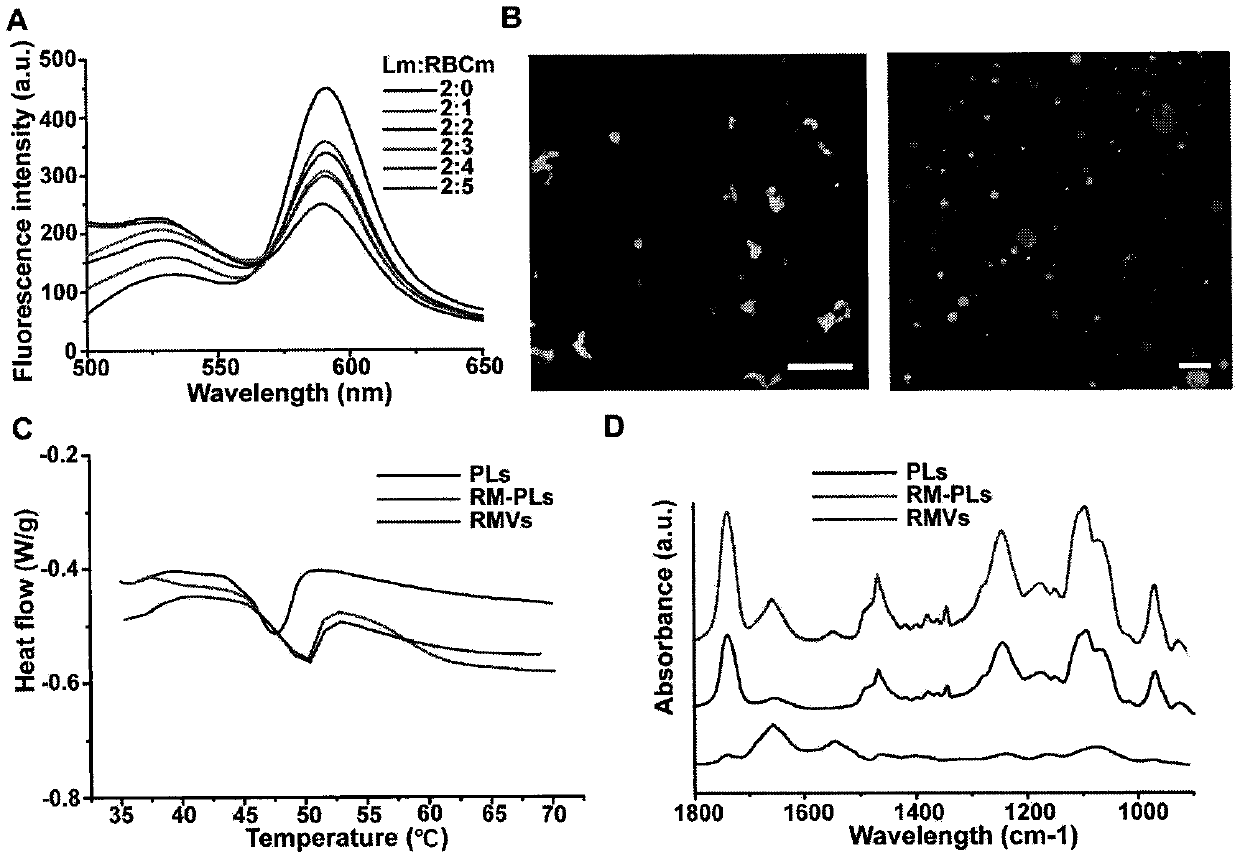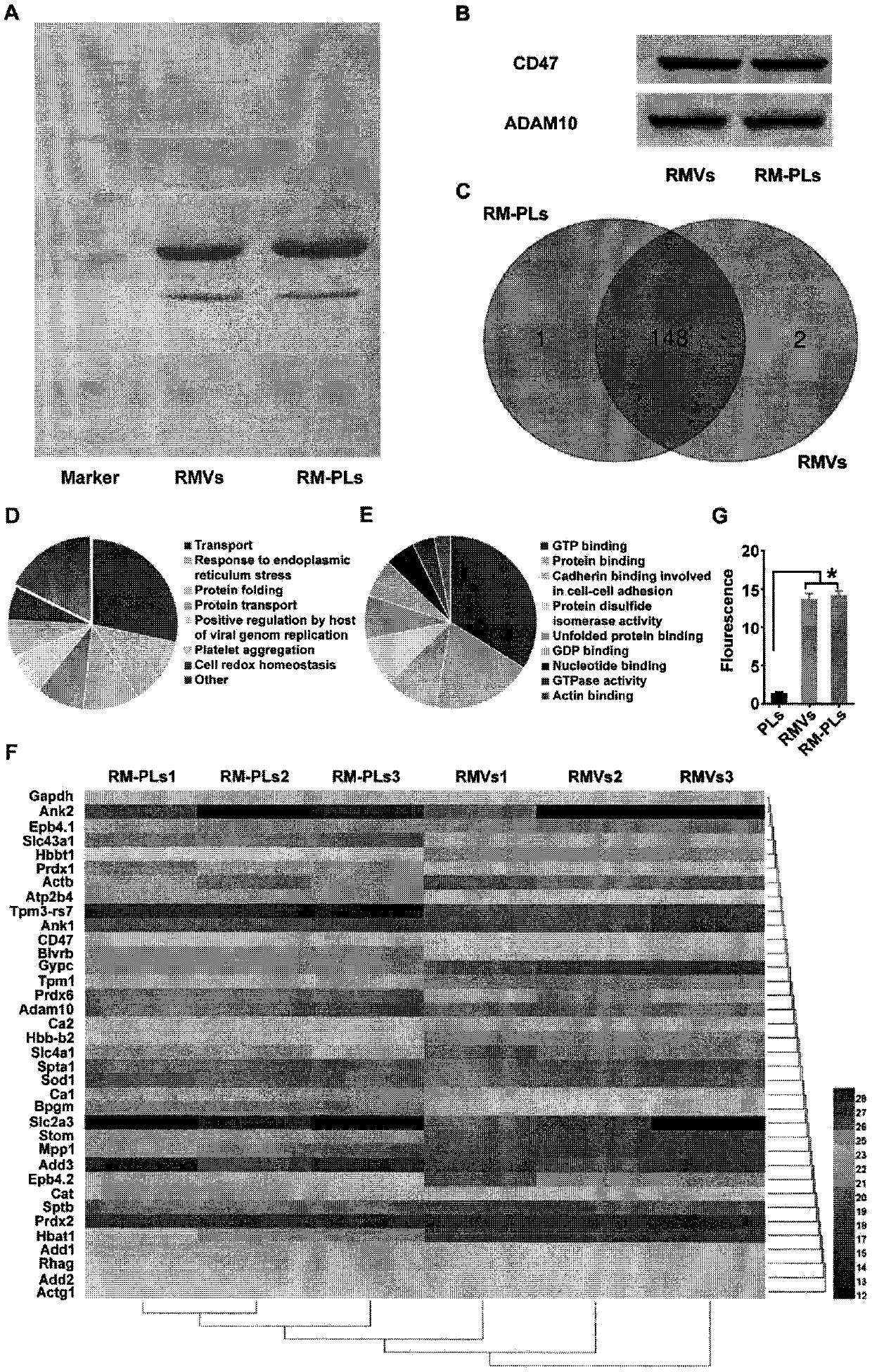Nano medicine system with bacterium pore-forming toxin adsorption capability and application of nano medicine system
A nano-drug and toxin adsorption technology, which is applied in the direction of medical preparations of non-active ingredients, antibacterial drugs, pharmaceutical formulas, etc., can solve the problems of weakening the detoxification effect of nano-sponge, weak detoxification ability, and high requirements for the core of nano-particles
- Summary
- Abstract
- Description
- Claims
- Application Information
AI Technical Summary
Problems solved by technology
Method used
Image
Examples
Embodiment 1
[0042] Embodiment 1: Construction of erythrocyte membrane hybrid liposome
[0043] In this example, erythrocytes were first isolated from the whole blood of mice, and then the erythrocyte membrane was extracted by hypotonicity and centrifugation. The specific operation was as follows: the eyeballs of ICR male mice were removed to take blood, and 1ml of whole blood was anticoagulated with heparin sodium, 700g, Collect erythrocytes by centrifugation at 4°C, add 10 mL of PBS solution containing 1 mM EDTA to resuspend erythrocytes, repeat the above steps to wash erythrocytes 3 times, and collect erythrocytes at the bottom. Then use PBS to make red blood cell suspension, and divide each 0.25ml into 1.5mL EP tube, add 950μL 0.2mM EDTA aqueous solution, mix well and vortex to break the red blood cells, then add 50μL 20×PBS to adjust to isotonicity, 4℃ Centrifuge at 20,000 g for 10 min, and discard the supernatant. Then add 950 μL of 0.2 mM EDTA aqueous solution, and repeat the above...
Embodiment 2
[0049] Example 2: Experimental verification of fusion between erythrocyte membrane and lipid membrane
[0050] Using fluorescence resonance energy transfer (FRET) technology to investigate membrane fusion, the specific operation: first use FRET fluorescent dyes to mark lipid membranes (C6-NBD and RhB-DHPE), and then add different amounts of red blood cell membranes to squeeze through the micropores Membrane, prepare the erythrocyte membrane hybrid liposome, and record the spectrogram with a fluorescence spectrometer (such as figure 2 shown in A). The results showed that with the increase of the amount of red blood cell membrane, the fluorescence intensity of RM-PLs at 534nm (C6-NBD) gradually increased, and the fluorescence intensity at 583nm (RhB-DHPE) gradually decreased, indicating that the red blood cell membrane was successfully fused into the lipid membrane. Increasing the gap of the FRET dye leads to the weakening of the FRET phenomenon;
[0051] The erythrocyte memb...
Embodiment 4
[0059] Embodiment 4: Physicochemical property characterization of erythrocyte membrane hybrid liposome
[0060] Observation under the transmission electron microscope after negative staining with uranyl acetate showed that the hybrid liposomes were regular spherical and uniform in size ( Figure 4 A), potential / laser particle size analyzer measurement result shows that hybrid liposome average particle diameter is 117.4 ± 2.3nm ( Figure 4 B&C), the potential is -36.0±0.2mv ( Figure 4 D).
PUM
 Login to View More
Login to View More Abstract
Description
Claims
Application Information
 Login to View More
Login to View More - R&D
- Intellectual Property
- Life Sciences
- Materials
- Tech Scout
- Unparalleled Data Quality
- Higher Quality Content
- 60% Fewer Hallucinations
Browse by: Latest US Patents, China's latest patents, Technical Efficacy Thesaurus, Application Domain, Technology Topic, Popular Technical Reports.
© 2025 PatSnap. All rights reserved.Legal|Privacy policy|Modern Slavery Act Transparency Statement|Sitemap|About US| Contact US: help@patsnap.com



